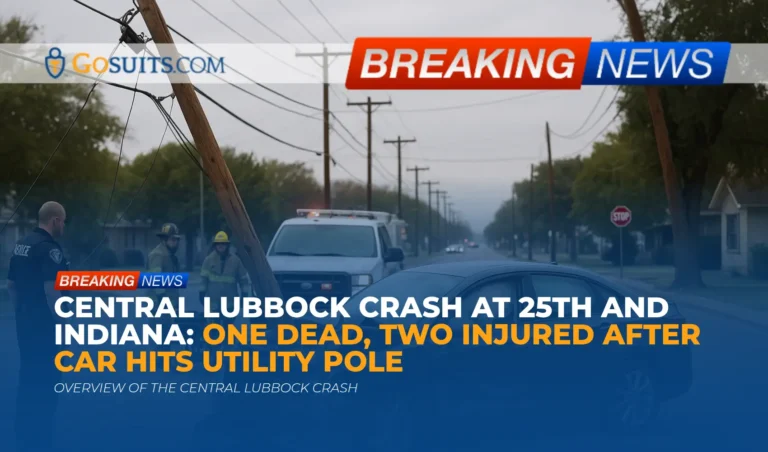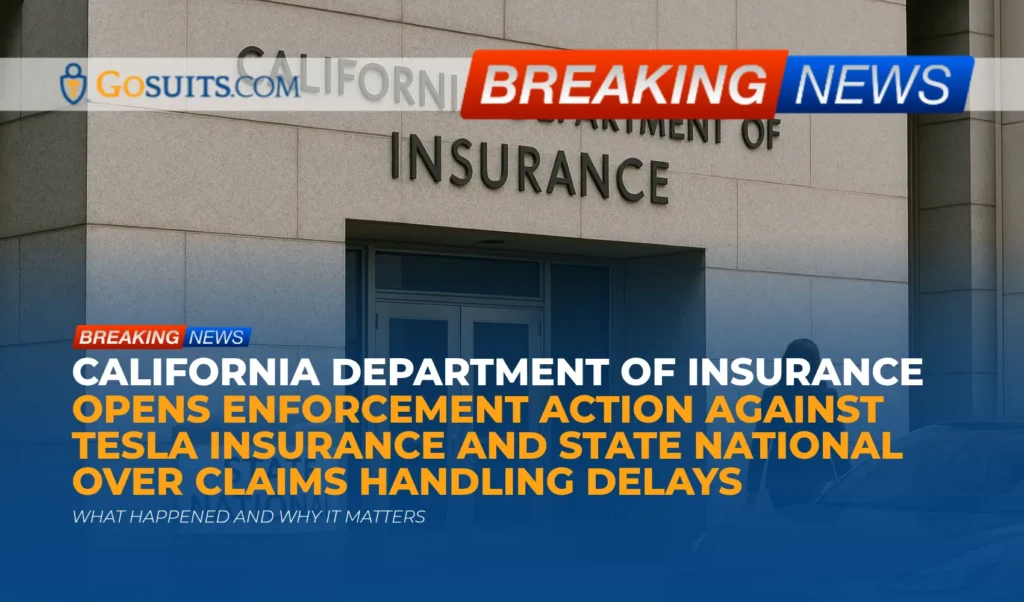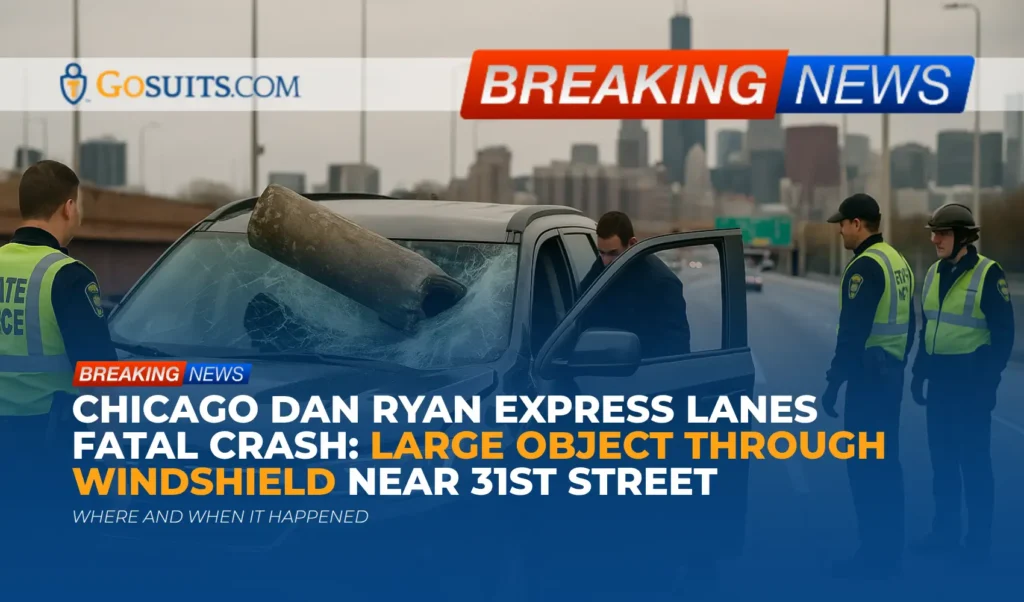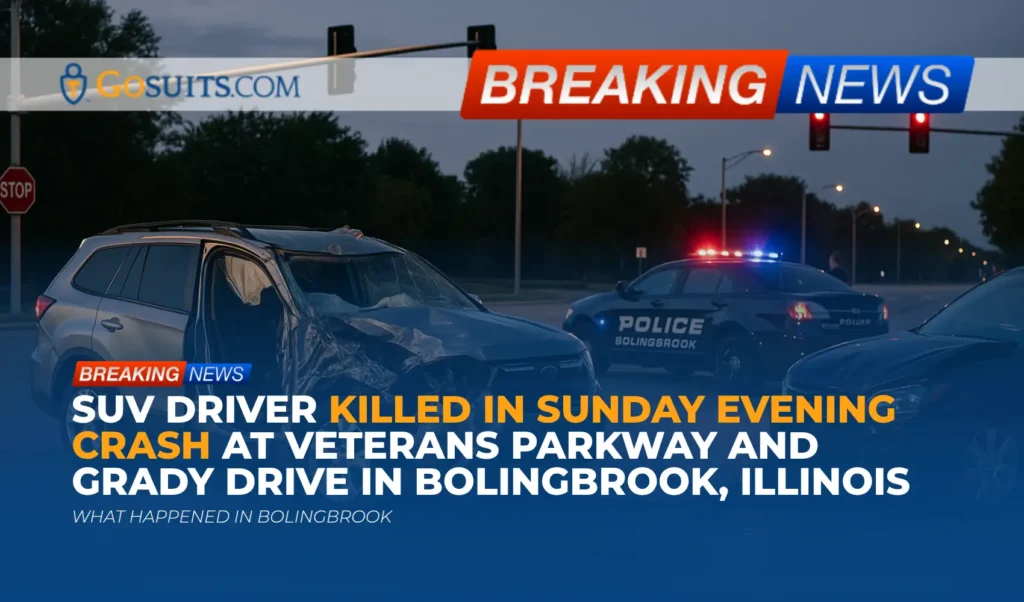- Overview of the central Lubbock crash
- What is confirmed and what remains under investigation
- Community impacts and safety around downed utilities
- Legal context in Texas after a fatal or injury crash
- Potential civil liability paths
- Insurance considerations in Texas
- Steps to preserve evidence and protect rights
- How to obtain official records and reports
- Key timelines and deadlines in Texas cases
- Supportive resources and practical next steps
- Commentary from Gosuits Lubbock, Texas Personal Injury Attorney
- Why timely action matters
Overview of the central Lubbock crash
Police in central Lubbock responded around 7:45 a.m. to a serious single-vehicle crash near 25th Street and Indiana Avenue. According to initial information, a car left the roadway and struck a utility pole. One person was killed. Two additional occupants sustained injuries described as moderate and minor. Southbound lanes on Indiana were closed as responders worked the scene and utility crews addressed damage to electrical infrastructure. Residents nearby reported power outages, and authorities noted more than a thousand customers without power in the immediate aftermath.
As is customary with an event of this magnitude, this is a developing situation. Details such as the identities of those involved, the role of the driver versus passengers, the conditions leading up to the collision, and the precise timeline of medical response and scene clearance have not yet been publicly released. Early reports are often refined later as investigators complete on-scene measurements, gather statements, and review available video or vehicle data.
What is confirmed and what remains under investigation
What is confirmed
- Location: Intersection area of 25th Street and Indiana Avenue in central Lubbock.
- Time: Approximately 7:45 a.m.
- Nature of crash: Single vehicle collided with a utility pole.
- Casualties: One person deceased; two others with moderate and minor injuries.
- Traffic impacts: Southbound lanes on Indiana closed following the crash.
- Power impacts: More than 1,400 customers initially without power in the area, consistent with damage to electrical infrastructure.
What remains under investigation
- Causation: Investigators typically assess speed, distraction, fatigue, road conditions, vehicle condition, and potential mechanical issues. No specific cause has been confirmed.
- Occupant roles: Authorities usually confirm who was driving and which occupants were passengers as part of the reconstruction process.
- Safety systems: Seat belt use and airbag deployment may be examined using vehicle and physical evidence.
- Contributing environmental factors: Lighting, sightlines, signage, and roadway surface conditions are standard components of a comprehensive crash review.
In single-vehicle collisions that involve a fixed object like a pole, law enforcement and crash reconstruction teams often work through a methodical process: scene documentation, witness statements, event data recorder retrieval when feasible, and review of nearby traffic or security cameras. Each piece helps explain how the vehicle left its lane and why the impact was not avoided or mitigated.
Community impacts and safety around downed utilities
Fixed-object impacts that damage power poles can endanger both vehicle occupants and the surrounding community. Downed or damaged lines pose electrocution risk. Road closures around Indiana Avenue were a necessary safety measure to allow law enforcement and utility crews to stabilize the scene and restore power.
Staying safe near downed power lines and damaged infrastructure
- Avoid contact: Treat all downed lines as energized. Keep a wide distance from wires and anything touching them.
- Report hazards: Immediately report downed lines to 911. Do not attempt to move lines or debris.
- Vehicle entrapment: If a vehicle is in contact with a live line, remaining inside until professional help arrives is often the safer choice unless the vehicle is on fire. Guidance from national health and safety authorities emphasizes minimizing conductive contact and making small “bunny hop” steps if an emergency exit is necessary to avoid step potential.
For general safety around electrical hazards and outages, national authorities provide practical summaries. The Centers for Disease Control and Prevention offers accessible guidance about power outages and electrical hazards in emergencies, including avoiding contact with downed lines and safe generator practices. See the CDC’s public guidance on electrical safety during outages at cdc.gov. Occupational guidelines about maintaining distance from power lines and understanding the risks of energized equipment are also summarized by OSHA.
Legal context in Texas after a fatal or injury crash
Texas law provides civil avenues for families after a fatal collision and for injured survivors. These laws are designed to address losses, medical bills, and accountability when negligence contributed to harm. The following frameworks are commonly relevant after a serious roadway crash:
Wrongful death
Texas recognizes a wrongful death claim when a person’s passing is caused by the wrongful act, neglect, carelessness, unskillfulness, or default of another. Eligible family members include the decedent’s spouse, children, and parents. The statute addressing who may bring a wrongful death case and on what basis is found in the Texas Civil Practice and Remedies Code. See Texas Civil Practice and Remedies Code Chapter 71, including Section 71.004 regarding statutory beneficiaries.
Survival claim
Separate from wrongful death, a survival claim allows the decedent’s estate to pursue the claim the decedent could have brought had they survived, addressing harms suffered between injury and death. This is recognized in Texas Civil Practice and Remedies Code Section 71.021.
Officer crash report and confidentiality
Texas law requires officers to complete crash reports that can be obtained by eligible parties, subject to confidentiality provisions. The Texas Transportation Code explains when and how these reports can be released. See Transportation Code Section 550.065.
Deaths requiring investigation
When a death is unexpected, unattended, or occurs in circumstances that may involve injury, Texas law provides for an inquest or autopsy by a justice of the peace or medical examiner, depending on the county. See Texas Code of Criminal Procedure Chapter 49, including Article 49.04 and the provisions establishing medical examiner systems. These laws are aimed at determining the cause and manner of death.
Roadway and fixed-object safety context
National roadway safety agencies emphasize that roadway departure crashes and fixed-object impacts remain a key source of serious injury and death. The Federal Highway Administration discusses strategies for reducing “roadway departure” harms, including mitigating fixed-object risks. See FHWA’s overview on roadway departure safety at safety.fhwa.dot.gov.
Potential civil liability paths
Although the specific cause of this Lubbock crash has not been publicly determined, several avenues of civil liability are often evaluated in single-vehicle pole collisions. Each case turns on facts, physical evidence, and applicable law.
Driver negligence
When passengers are injured, or a passenger is killed, potential claims against the driver may be considered if evidence indicates negligence, such as inattention, unsafe speed, or failure to control. This includes private passenger vehicles and, in some circumstances, employer-provided vehicles if the driver was acting within the course and scope of employment.
Roadway design, maintenance, and visibility
Investigations sometimes examine whether roadway design or maintenance contributed to the crash or to the severity of the outcome. Examples include missing or obscured signage, poor surface conditions, inadequate lighting, or guardrail placement. Claims involving public entities are complex and subject to specific notice requirements and immunities; an early legal review is important if roadway conditions are suspected to be involved.
Utility pole placement and protective measures
Fixed-object impacts may raise questions about pole placement, breakaway features, or shielding where appropriate. Whether a utility or right-of-way owner faces exposure depends on standards, easements, and engineering considerations applicable to that location. These evaluations are technical and require careful analysis of plans, permits, and any applicable guidelines.
Vehicle defect or maintenance issues
Steering, tires, brakes, and restraint systems are commonly examined. A sudden mechanical failure or defective component can change the liability picture, potentially implicating manufacturers or maintenance providers. Preserving the vehicle and downloading event data can be critical.
Comparative responsibility
Texas follows proportionate responsibility rules, where fault may be allocated among involved parties. Allocation affects recoveries and defenses, and underscores the importance of prompt, thorough fact-finding to understand what truly happened.

Insurance considerations in Texas
Insurance coverage can be complex after a fatal or serious injury crash, particularly where a single vehicle is involved. Important Texas insurance provisions include:
- Liability coverage: If a driver is found negligent, liability coverage may address injuries to others, including passengers. Policy limits and exclusions vary.
- Personal Injury Protection (PIP): Texas insurers must offer PIP coverage unless rejected in writing. PIP can provide benefits regardless of fault to help with medical expenses and certain nonmedical costs, up to the purchased limits. See Texas Insurance Code Section 1952.152.
- Medical Payments (MedPay): Optional coverage that may cover medical bills, typically without wage loss benefits. Policy terms control.
- Uninsured/Underinsured Motorist (UM/UIM): Texas insurers must offer UM/UIM coverage unless rejected in writing. This can apply when a negligent driver lacks insurance or has insufficient limits. See Texas Insurance Code Section 1952.101.
- Accidental death benefits: Some auto or supplemental policies include accidental death and dismemberment provisions. Check policy documents.
- Employer-related coverage: If a vehicle was being used for work purposes, commercial policies or other coverages may be implicated.
It is generally prudent to seek a legal consultation before speaking with insurance adjusters or providing a recorded statement. Statements made early can be used later to limit or deny claims, and policy interpretation issues are common. A conversation with a seasoned attorney can help clarify coverage and protect rights before interacting with insurers.
Steps to preserve evidence and protect rights
In the hours and days after a serious crash, key evidence can disappear. These steps are commonly important to a thorough investigation:
- Preserve the vehicle: Ensure the vehicle is not destroyed or altered before it can be inspected. Event data recorder downloads, airbag control module data, and component inspections can be decisive.
- Secure scene photos and video: Collect photographs of skid marks, debris patterns, curb and pole damage, and roadway conditions as soon as it is safe. Note weather and lighting. Request nearby camera footage from businesses or residences; many systems overwrite within days.
- Identify witnesses: Obtain names and contact details of bystanders, drivers, and first responders when possible.
- Document medical care: Maintain a complete record of hospital visits, imaging, procedures, and physician notes. Keep track of out-of-pocket expenses and time missed from work.
- Avoid early vehicle repairs: Repairs can erase evidence. Coordinate inspections prior to any repair or salvage activity.
- Consider a preservation letter: When third parties may have relevant evidence (e.g., a utility or nearby business with cameras), a prompt written request to preserve data can be important.
How to obtain official records and reports
Several official documents are relevant after a fatal or injury crash. Each has a specific process and legal framework.
Texas officer’s crash report
Crash reports in Texas are maintained under the Crash Records Information System (CRIS). Authorized individuals can purchase the report online once available. The Texas Department of Transportation explains crash report release and availability on its public site and provides the purchase portal. See TxDOT CRIS Crash Report Purchase and the statutory rules at Transportation Code § 550.065.
Supplemental materials
In addition to the basic report, agencies may have scene diagrams, measurements, and photos. Availability can vary. Some items may be requested through open records processes, subject to redactions. When fatalities are involved, agencies sometimes coordinate with medical examiners and prosecutors, which can affect timing of releases.
Autopsy and inquest records
Under Texas law, certain deaths are subject to inquest or medical examiner review. Records such as autopsy reports are maintained by the appropriate office. The governing framework appears in Texas Code of Criminal Procedure Chapter 49. In counties served by a medical examiner, requests typically go to that office. Families seeking copies can ask about procedures, identification requirements, and expected timelines. If unsure which office handled the case, the responding police agency can usually direct inquiries to the correct contact.
Death certificate
Certified copies of the death certificate are generally obtained through Texas Vital Statistics or the local registrar. Guidance for requesting death records is available from the Texas Department of State Health Services at dshs.texas.gov. Multiple certified copies are often needed to manage affairs.
Traffic control and utility information
Where a crash damages a utility pole, coordination between law enforcement and the utility affects road closures and restoration. While local utilities provide outage information, safety guidance about downed lines is summarized by federal sources such as the CDC’s power outage pages at cdc.gov. For status of roadway reopening, the local police department’s public information office or non-emergency line is the best source of updates.
Who to contact
- Lubbock Police Department: For information about the crash report number, scene details, and road closures. Request the CRIS report when available via TxDOT’s portal.
- Medical examiner or justice of the peace office: To understand whether an autopsy was performed and how to request records.
- Hospitals and EMS providers: For medical records relating to injuries sustained in the crash.
When requesting records, have as much detail as possible: date and time, location (25th and Indiana), vehicle description if known, and any incident or case numbers provided by first responders.
Key timelines and deadlines in Texas cases
Texas imposes deadlines that can affect civil claims arising from vehicle crashes.
- Statute of limitations for injury and wrongful death: Generally two years in Texas. See Texas Civil Practice and Remedies Code § 16.003. There are exceptions, and different rules can apply in specific contexts; early review is important.
- Notice to governmental entities: If a claim may involve a government unit (e.g., roadway conditions), additional notice requirements and shortened timelines may apply under the Texas Tort Claims Act and local charters. These can be much shorter than two years.
- Insurance notice: Policies typically require prompt notice. Late notice can complicate coverage.
Timely action protects access to evidence and options under the law. Delays can result in overwritten video, repaired vehicles or infrastructure that erases physical evidence, and fading memories of witnesses.
Supportive resources and practical next steps
Serious crashes are overwhelming. The immediate needs often span medical decisions, coordination with authorities, and early paperwork. The following practical steps can help organize the process while respecting ongoing investigations.
- Health first: Ensure injured individuals receive appropriate care and follow-up. Maintain a folder with discharge summaries, prescriptions, and therapy plans.
- Identify the case number: Ask the responding police agency for the incident or case number to simplify future records requests.
- Obtain the crash report: When available, use the TxDOT CRIS portal at cris.txdot.gov to purchase the report. This often lists driver, roadway, and basic causation codes.
- Request autopsy/inquest materials if applicable: Confirm which office handled the case and inquire about the process and timing for release.
- Secure insurance documents: Collect all relevant auto policies, any PIP or UM/UIM endorsements, and health insurance details.
- Document losses: Keep a log of mileage, caregiving time, lost income information, and receipts for funeral or memorial expenses as applicable.
- Consult before contacting insurers: It is generally recommended to consult with a qualified attorney before giving statements to any insurance company. What is said to insurers can be used later to dispute claims or limit recovery.
For general safety and prevention, national agencies provide data and strategies to reduce fixed-object crashes and roadway departure injuries. The Federal Highway Administration’s roadway departure safety page at safety.fhwa.dot.gov summarizes countermeasures such as clear zone management and protective systems that can reduce the severity of impacts.
Commentary from Gosuits Lubbock, Texas Personal Injury Attorney
Our hearts are with the individuals and families impacted by the crash near 25th and Indiana. Early reports indicate a devastating pole-strike collision with a loss of life and injuries to others. This commentary is offered for educational purposes and general information to help the community understand what often happens next and what issues are commonly evaluated after a crash like this.
In our view, the central questions in a single-vehicle pole impact typically include why the vehicle departed its path, whether any mechanical or environmental factor contributed, and whether reasonable safety measures could have reduced the severity of the outcome. Establishing the truth requires an unhurried, evidence-driven approach: scene documentation, vehicle data, autopsy findings where applicable, and a close look at roadway and infrastructure conditions. It is important not to jump to conclusions before those steps are completed.
Insurance carriers and corporations often move fast after serious incidents. Adjusters may ask for recorded statements or push for early resolutions before the full picture is known. That can disadvantage those dealing with grief or recovery, especially when policy language and fault allocation rules are complex. Statements made in the first days can be used later to minimize payouts or dispute responsibility. Knowing policy rights, the availability of PIP or UM/UIM benefits, and potential third-party responsibility for infrastructure or product issues can make a meaningful difference.
An initial consultation with a seasoned attorney can help clarify options, identify what evidence should be preserved, and explain how Texas statutes and deadlines apply. That conversation also helps set a plan for obtaining the official crash report, autopsy documentation where appropriate, and any available scene or video evidence. Early guidance can be particularly important if there is any indication that a governmental entity or a commercial third party may be involved, as timelines and notice requirements can be strict.
Why timely action matters
What to do now
- Gather and protect documents: Collect medical records, discharge summaries, insurance policies, and any communication received from insurers. Keep everything organized.
- Secure the crash report: Monitor availability and purchase the Texas crash report through the TxDOT CRIS system when it is released.
- Preserve physical evidence: Ensure the involved vehicle is retained for inspection, and request preservation of any nearby camera footage that may have captured the event.
- Record impacts: Maintain a contemporaneous log of medical symptoms, appointments, time missed from work, and expenses related to the incident.
- Seek a no-cost legal consultation before insurer calls: Consult with an attorney prior to providing statements to any insurance company. What is said can be used later to challenge claims or assign fault.

Why acting promptly matters
- Evidence fades quickly: Many security systems overwrite video within days, roadway conditions change, and vehicles may be moved or repaired. Early action helps preserve the most accurate record.
- Deadlines apply: Texas has statutes of limitations and, where government entities may be involved, special notice requirements. Missing a deadline can foreclose options.
- Insurance positioning: Insurers often seek early statements and may frame issues in a way that limits coverage. Having clarity on rights and obligations before those conversations helps prevent avoidable missteps.
- Financial stability: Understanding available coverages like PIP, MedPay, or UM/UIM early can help stabilize medical and household finances during a difficult time.
Where and when it matters
- At the scene and shortly after: Photos, measurements, and witness identities are best captured immediately.
- Within days: Requests to preserve video from nearby cameras, plus formal retention of the vehicle, are time sensitive.
- Within weeks: Crash reports often become available, medical records begin to accumulate, and autopsy or inquest findings may be released depending on the county process.
- Over the first months: Insurance coverage issues, benefit coordination, and fault assessments typically take shape. An organized approach during this period can influence outcomes and options.
Additional context and data
Fixed-object collisions, including pole strikes, are part of a broader category of roadway departure events that transportation safety authorities work to reduce. Federal guidance emphasizes countermeasures such as clear zones, breakaway hardware, and protective barriers in select environments to lessen impact severity. The Federal Highway Administration’s summary of strategies for reducing roadway departure risk is available at safety.fhwa.dot.gov. While each urban corridor is distinct, these principles highlight that crash severity is influenced not only by driver behavior and vehicle dynamics but also by the roadside environment and infrastructure design. Understanding how those elements intersect in a specific location like 25th and Indiana requires inspection of local plans, right-of-way conditions, and the precise crash geometry.
For families seeking official documentation, Texas’s statewide portals and statutes provide the guardrails. The crash report process runs through TxDOT’s CRIS system at cris.txdot.gov. Death investigation procedures and access to autopsy reports are governed by the Texas Code of Criminal Procedure Chapter 49 at statutes.capitol.texas.gov. Wrongful death and survival actions are addressed in the Texas Civil Practice and Remedies Code Chapter 71 at statutes.capitol.texas.gov, with general limitation periods at CPRC § 16.003. Insurance provisions for PIP and UM/UIM offerings are found at Insurance Code § 1952.152 and § 1952.101. These are reliable, government-published references that set out the basic legal framework without speculation about the facts of this specific event.
What remains most important today
A sudden loss and serious injuries ripple through families and neighborhoods. Stability in the immediate term comes from medical care, clear communication with authorities, and careful tracking of information. Over time, a methodical approach to records, evidence, insurance, and legal options can help ensure that decisions are informed and that no step is rushed before the facts are in hand. As official updates are released by local authorities, more detail will help answer questions about how and why this happened near 25th and Indiana, and what can be done to prevent similar tragedies in the future.






